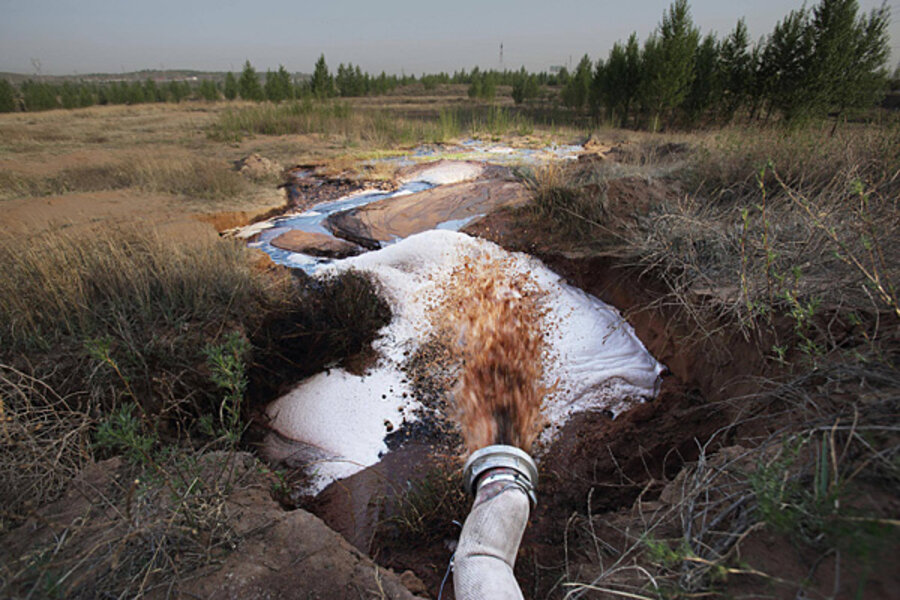Greenpeace: Shenhua coal project dumps toxic water in China
Loading...
| BEIJING
A project operated by China's largest coal miner, Shenhua Group, has reduced groundwater levels in a region of Inner Mongolia and discharged high levels of toxic wastewater, environmental campaign group Greenpeace said on Tuesday.
The report, the first by Greenpeace to single out and publicly challenge one of China's powerful state-owned companies, comes as the country's new leadership steps up its focus on pollution amid growing protests over environmental degradation.
China recently cancelled plans to build a $6 billion uranium processing plant after hundreds of protestors took to the streets.. Other petrochemical projects have also been cancelled after mass demonstrations.
Shenhua's coal-to-liquid pilot close to Ordos city is one of three such projects operating in China. It has drained more than 50 million tonnes of groundwater from the Haolebaoji region since 2006, Greenpeace said in the report.
"We are taking these allegations very seriously and we will start our own investigations into the project to ensure that it meets all environment-related regulations," a spokeswoman from Shenhua Group said.
"We will release our own environmental report on the project after the investigation."
The Greenpeace investigation, which the group said was based on 11 field trips to the Shenhua project from March to July this year, found high levels of toxic chemicals in discharged wastewater. It said many other carcinogenic compounds were identified in sediment samples.
"Shenhua claims its coal-to-liquid project has 'low water consumption' and 'zero discharge'. Our investigation proves these claims are false," Greenpeace East Asiacampaigner Deng Ping said.
"Shenhua's practices are violating Chinese water resource principles and laws controlling industrial waste water discharge."
Shenhua's coal-to-liquid project has a production capacity of 1.08 million tonnes a year, with plans to expand to 5 million tonnes.
Plans to scale up the project would see its water use triple to 41 million tonnes by 2017, according to Greenpeace.
Coal-to-liquid technology turns the traditional fuel into petrochemicals. The process has long been controversial due to its high water and energy needs but with slowing growth of coal power generation, China's coal companies are seeking new markets. More than 100 coal chemical projects are currently waiting for approval, said Li Yan,Greenpeace climate and energy manager.
"This is why we chose to stand out against a big iconic project like Shenhua coal-to-liquid at this time as it's still possible that some major decisions can be shifted because of environmental concerns."
The Ordos city government has also claimed damage caused by Shenhua's coal-to-liquid project in two notices published on its website, pointing to reduced groundwater levels, irrigation problems, and a lack of safe drinking water for residents. It cited petitions from residents and warned of the threat to social harmony, recommending the relocation of farmers and compensation for water losses. (Reporting By Dominique Patton; Additional reporting by Fayen Wong; Editing by Michael Urquhart)







